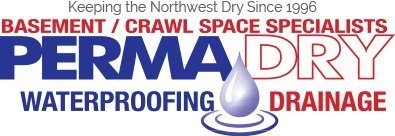Perma Dry Waterproofing Blog
Do you have water in your basement or crawl space? Is there mold or mildew affecting the air quality in your home? It's likely you need basement or crawl space drainage. Perma Dry offers a wide variety of common sense solutions to your wet basement or crawl space problems. Learn more here in our blog. When you're ready, give us a call and schedule an appointment.
Call for Inquiry
Send An Email
Get A Free Quote
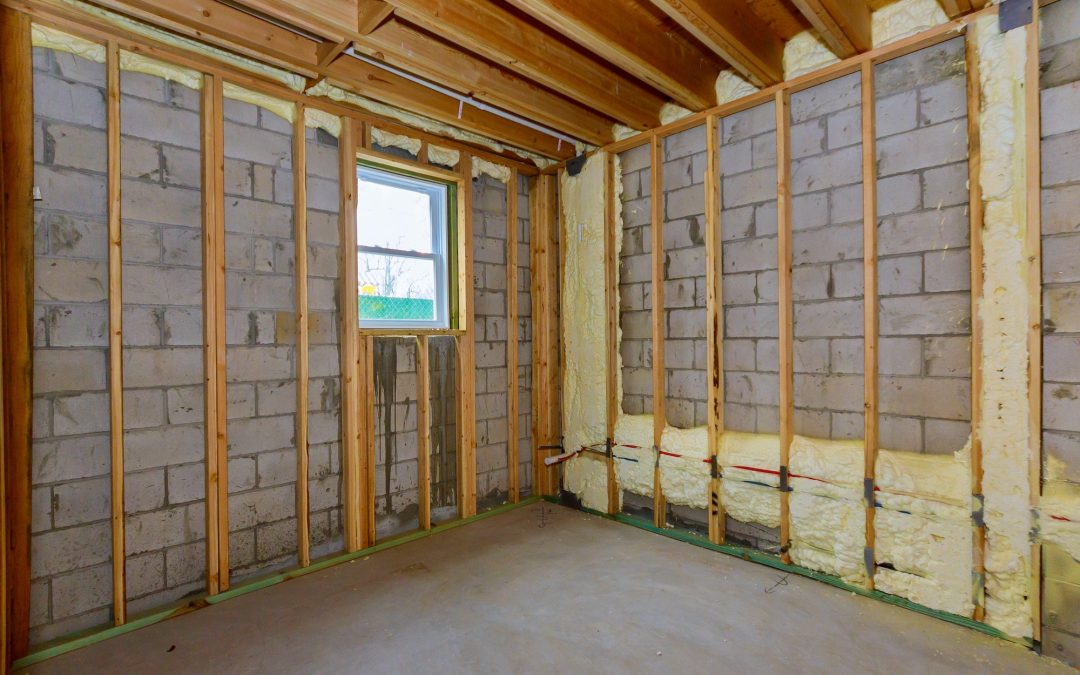
Foundation Settling: Signs, Risks, and Repair Options
Foundation settlement is a common problem that affects many homeowners. This can occur due to a variety of factors, such as soil movement, poor drainage, or even improper installation. While it is a common issue, it can lead to major problems if it isn’t addressed in a timely manner. In this article, we will discuss the signs of foundation settlement, the potential risks associated with it, and repair options you can take to fix the problem.
Signs of Foundation Settlement
If your home is experiencing foundation settlement, there are several signs you can look for. One of the most common signs is cracks in the walls or flooring. These cracks can be small and minor, or large and deep. You may also notice gaps between your door frames and the walls, as well as doors or windows that don’t open or close properly. In addition, you may find sloping floors or staircases that are uneven.
It’s important to inspect your home regularly for these signs of foundation settlement, as the longer it goes unnoticed, the more costly the repair can be. The good news is, if you do catch it early, there are repair solutions that can be implemented to fix the problem.
Risks of Foundation Settlement
Foundation settlement can be a major problem if it goes untreated. It can cause structural damage to your home, which can be very costly to repair. In addition, it can lead to uneven floors and other problems, such as mold growth. Another risk is that it can cause your home to become unstable and unsafe, which can put your family in danger.
If you think your home may be experiencing foundation settlement, it’s important to contact a professional immediately to inspect the problem and provide a solution.
Repair Options
If your home is experiencing foundation settlement, there are several repair options you can take. The most common option is to use underpinning. This involves excavating around the foundation and installing new supports. This can be a costly repair, but it is the most effective way to ensure your home is structurally sound.
Another option is to use a foam injection. This involves injecting a foam-like material into the soil around your foundation. This can help to fill in any gaps and stabilize the foundation. It is a less expensive option than underpinning, but it can be less effective in the long run.
A third option is to use slab jacking. This is a process in which a concrete mixture is injected into the soil beneath your foundation. The mixture helps to lift the foundation and fill in any voids. This is a less expensive option than underpinning, but it can be less effective in the long run.
When to Call a Professional
If you think your home may be experiencing foundation settlement, it’s important to contact a professional immediately to inspect the problem and provide a solution. The sooner you catch the problem, the easier and less expensive it will be to repair. A professional will be able to inspect the problem and recommend the best solution for your home.
For more information on foundation settlement, or to speak with a professional about repair options, contact Perma Dry Waterproofing today.
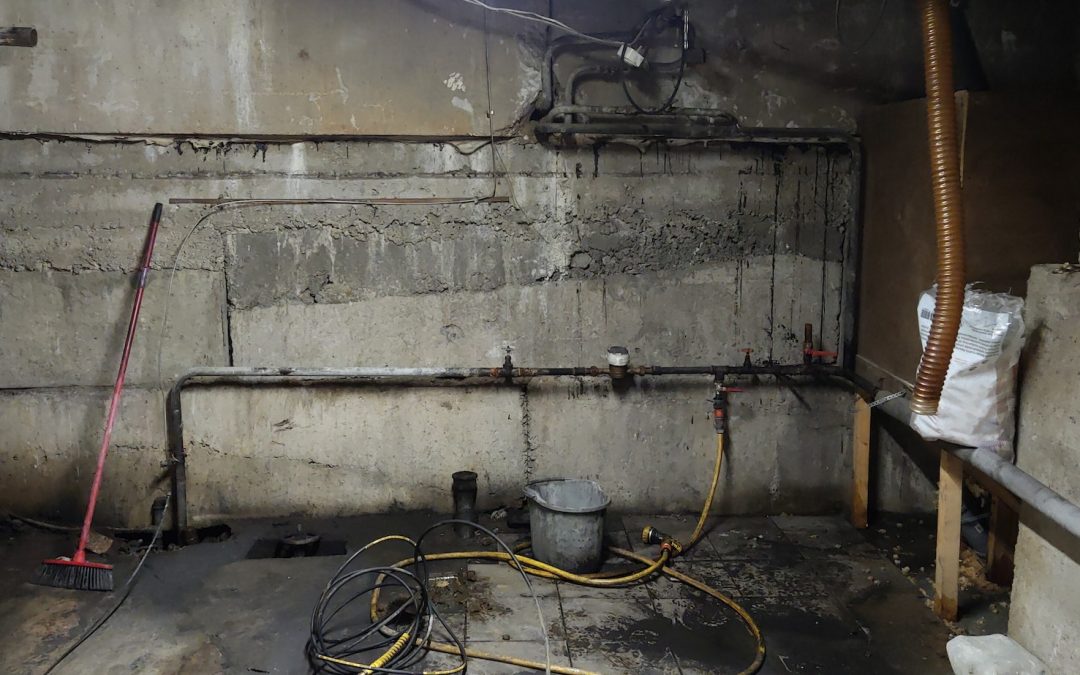
Case Study: Transforming a Wet Basement into a Dry, Usable Space
Having a wet basement is a major issue for homeowners, as water can cause mold, mildew, and other dangerous issues. In addition, it prevents the basement from being used as a living space or storage area. Luckily, there are many ways to transform a wet basement into a dry usable space. In this case study, we’ll look at how one homeowner was able to do just that.
Assessing the Situation
Before taking any steps to transform the wet basement into a dry usable space, it’s important to assess the situation. This includes looking for any signs of water damage or problems with drainage. It’s also important to determine the source of the water in the basement and make sure it is identified and fixed. Once these issues have been addressed, then it’s time to begin working on transforming the wet basement.
At this point, it’s important to evaluate any existing drainage systems and determine which methods would be best for keeping the basement dry. This could include installing new drainage systems or making repairs to existing ones. It’s also important to check for any leaks in the walls and floors of the basement and make any necessary repairs.
Installing a Waterproofing System
Once the cause of the water damage has been determined and any existing drainage systems have been evaluated, it’s time to begin waterproofing the basement. This can be done by installing a waterproofing system such as sump pumps or French drains. It’s important to use quality materials and make sure they are installed correctly in order to ensure they are effective.
In some cases, homeowners may need to install additional waterproofing systems such as sealants or membranes. These can help keep water out of the basement by creating an extra layer of protection between the foundation and the interior walls of the basement. It’s important to follow manufacturer instructions when applying these materials in order to ensure they are effective.
Adding Insulation
In order to keep moisture out of the basement and help control humidity levels, it’s important to add insulation. This can be done by adding insulation panels or rolls between floor joists in order to stop air from entering or escaping from beneath the home. It’s also important to insulate walls using rigid foam boards or spray foam insulation.
Adding insulation helps keep temperatures inside at comfortable levels year-round and helps protect against moisture buildup in basements by preventing warm air from entering through cracks in walls or floors.
Making Finishing Touches
Once all of these steps have been taken, it’s time to make some finishing touches on your newly transformed basement. This could include painting or staining walls or refinishing floors with tiles or hardwood flooring.
It’s also important to add proper ventilation so that air is able to circulate properly throughout the space. This can be done with ceiling fans or by installing windows that open up into outside areas.
Hiring Professionals
If you’re feeling overwhelmed by all of these steps, don’t worry! There are professionals who specialize in waterproofing basements who can help you every step of the way. Companies like PermaDry Waterproofing offer comprehensive services that include everything from assessing your situation and fixing existing drainage systems, to waterproofing your home and making finishing touches.
Their experienced technicians will work with you every step of the way so you can rest assured knowing that your home is safe from water damage and ready for use as a living space or storage area.
Conclusion
Transforming a wet basement into a dry usable space is no small task but with careful planning and help from professionals like those at PermaDry Waterproofing, even seemingly impossible tasks become manageable! With their help, you can easily turn your wet basement into a safe haven you’ll love spending time in!
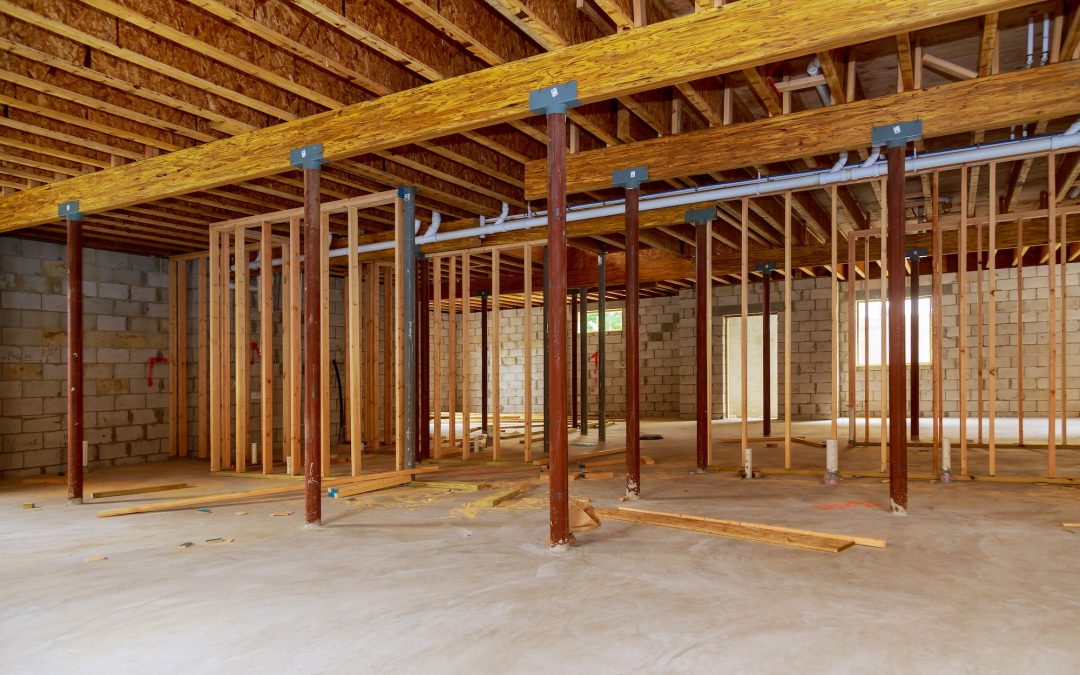
Foundation Repair: Hiring the Right Contractor for the Job
Having a properly functioning foundation is essential for any building, and if your foundation needs repair, it is essential to hire a qualified contractor for the job. Foundation repair is a complex process and requires expertise to ensure the job is completed correctly. Knowing the right questions to ask and what to look for when choosing a foundation repair contractor is key to making sure your repair is successful. In this blog post, we will discuss the importance of hiring the right contractor for foundation repair, the qualities to look for when selecting a contractor, and some of the common questions to ask.
Why It’s Important to Hire the Right Contractor for Foundation Repair
When it comes to foundation repair, it is important to hire a knowledgeable and experienced contractor who can diagnose the problem accurately and provide a reliable and cost-effective solution. A poorly planned and executed repair can result in further damage to the foundation and cause more costly repairs in the future. Additionally, a foundation repair contractor should have the skills and expertise to assess the underlying cause of the problem and provide effective solutions.
Qualities to Look for When Choosing a Foundation Repair Contractor
When selecting a foundation repair contractor, it is important to choose someone with the right qualifications and experience. Some of the qualities to look for include:
- Expertise in foundation repair and a proven track record
- A valid license and insurance
- Good communication skills and a willingness to answer questions
- Experience using quality materials and tools
- Good customer service
It is also important to check out the contractor’s references and reviews, and to make sure the contractor you hire is reputable and reliable.
Questions to Ask a Foundation Repair Contractor
Before hiring a foundation repair contractor, it is important to ask the right questions to make sure you are getting the best service possible. Some of the questions to consider include:
- What experience do you have with foundation repair?
- What methods do you use to repair foundations?
- Do you have a valid license and insurance?
- What materials will you be using?
- Will the repair require any additional services or tools?
- What is the estimated cost of the repair?
- How long will the repair take?
Asking these questions will help you get a better understanding of the contractor’s experience and qualifications, and will also help you make sure you are getting the best service possible.
Conclusion
When it comes to foundation repair, hiring the right contractor is essential. It is important to choose a contractor with the necessary qualifications and experience, and to ask the right questions to make sure you are getting the best service possible. At PermaDry Waterproofing, we have over 30 years of experience in foundation repair and waterproofing, and we are dedicated to providing the best service and quality workmanship. Contact us today at PermaDry Waterproofing to learn more about our services and to get a free estimate.
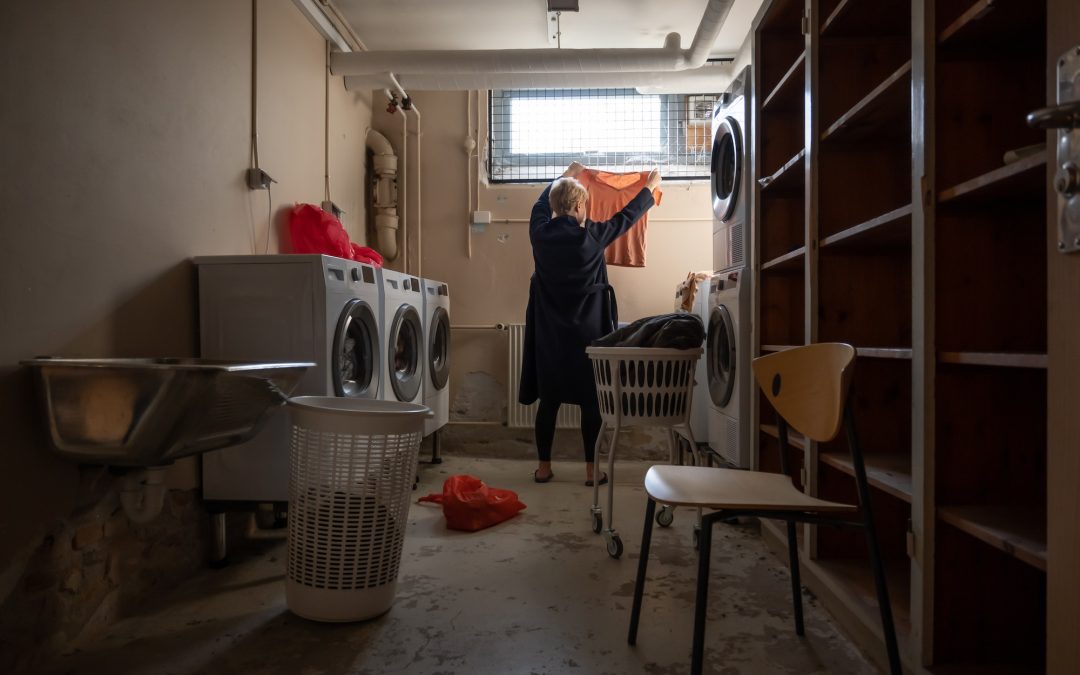
Foundation Repair Methods: Pros and Cons
Foundation repair is a complicated and important issue for many homeowners. It can be a costly and time-consuming endeavor, requiring specialized knowledge and experience. In this article, we will discuss the various types of foundation repair methods, their associated benefits and drawbacks, and how to choose the right method for your home.
Pouring a New Foundation
The most common type of foundation repair is pouring a new foundation. This method involves digging out the existing foundation and replacing it with a new one. The new foundation can be made of concrete, steel, or other materials. This method of foundation repair is typically the most expensive and time-consuming, but it is also the most reliable and long-lasting.
Advantages of pouring a new foundation include increased structural stability, improved drainage, and greater protection against water damage. Additionally, this type of repair can often be done in a relatively short amount of time. The main disadvantage of this option is the cost, which can be considerable depending on the size and complexity of the project.
Steel Piers
Steel piers are another option for foundation repair. This method involves driving steel piers into the ground and attaching them to the foundation. The piers act as a support for the foundation, helping to stabilize it and prevent further damage. Steel piers are an economical and reliable option for foundation repair, and they can often be installed in a relatively short amount of time.
The main advantage of steel piers is that they can be installed quickly and easily, and they provide a reliable and long-lasting solution. They are also less expensive than pouring a new foundation. The main disadvantage is that they are not as effective at providing structural stability as pouring a new foundation. Additionally, steel piers may not be suitable for all types of soil.
Underpinning
Underpinning is a foundation repair method that involves excavating beneath the foundation and installing new supports or piers. This method is often used when there is a problem with the soil beneath the foundation, such as poor soil composition or insufficient drainage. Underpinning can be a more costly option than pouring a new foundation, but it can also provide a more reliable and long-lasting solution.
The main advantages of underpinning are that it can provide increased structural stability and improved drainage. Additionally, it can be installed relatively quickly, and it can be tailored to fit the specific needs of the foundation. The main disadvantage is that it can be more costly than pouring a new foundation.
Concrete Slab Repair
Concrete slab repair is a foundation repair method that involves repairing or replacing sections of a concrete slab foundation. This method is often used when there is a problem with the concrete, such as cracks or settlement. Concrete slab repair can be a relatively inexpensive option for foundation repair, and it can also provide a reliable and long-lasting solution.
The main advantages of concrete slab repair are that it can be relatively inexpensive and it can provide a reliable and long-lasting solution. Additionally, it can be installed relatively quickly and it can be tailored to fit the specific needs of the foundation. The main disadvantage is that it can be more costly than pouring a new foundation.
When it comes to choosing the right foundation repair method for your home, it is important to consider your budget, the type of soil you have, and the condition of the existing foundation. Additionally, it is important to seek the advice of a qualified foundation repair professional. At Permadry Waterproofing, our team of experts can help you choose the right foundation repair method for your home. Contact us today to learn more!

Sump Pumps 101: Everything You Need to Know About Protecting Your Basement
A sump pump is a crucial part of any home’s waterproofing system and if you’re a homeowner, it’s important to know how it works and the steps necessary to protect your basement. Sump pumps are designed to remove standing water from your basement and prevent flooding, but they require regular maintenance to keep them running properly. In this blog post, we’ll discuss everything you need to know about sump pumps and how to protect your basement.
What is a Sump Pump?
A sump pump is a small electric device that is installed in the lowest area of your basement or crawlspace. Its purpose is to collect and remove any water that may enter the area by either draining it away or pumping it out. The pump itself consists of three parts: a basin, a pump, and a discharge line.
The basin collects the water and acts as a reservoir for the pump. The pump then pushes the water out through the discharge line which carries it away from your home. The discharge line can either be connected directly to the city sewage system, or lead outside into an area where it will not cause further damage.
How Does a Sump Pump Work?
Sump pumps are powered by electricity and work by using an impeller (or rotor) to create suction which draws water into the basin. The impeller then spins rapidly, pushing the water out of the sump pump through the discharge line. When there is no more water present in the basin, the sump pump will power off automatically.
Sump pumps are equipped with sensors that detect when water levels rise above normal levels. When this happens, the sump pump will be triggered into action and begin pumping out any excess water quickly and efficiently. This helps protect your home from flooding before it becomes an issue.
Maintenance Tips for Your Sump Pump
It’s important to maintain your sump pump regularly in order to keep it functioning properly. Here are some tips for keeping your sump pump in good condition:
- Check your sump pump regularly for debris or damage.
- Ensure that all connections are secure.
- Make sure all hoses are free of kinks or clogs.
- Replace worn out parts as needed.
- Test your sump pump periodically by adding water to the basin.
Contact Professional Waterproofers For Help
If you need help installing or maintaining your sump pump, you should contact a professional waterproofing contractor like PermaDry Waterproofing. They have years of experience dealing with all types of waterproofing issues, including installing and maintaining sump pumps. Their team of experts can help ensure that your basement stays dry and protected from flooding.
You can learn more about PermaDry Waterproofing services at their website https://www.watershieldseattle.com/#phone. You can also call them directly at 1-800-737-6242 for more information or to schedule an appointment.
Conclusion
Sump pumps are essential for protecting your basement from flooding and keeping it dry year round. It’s important to understand how they work and take proper care of them in order to keep them running properly. Regular maintenance is key when it comes to keeping your sump pump functioning optimally so make sure you follow these tips to ensure that your basement stays safe from flooding.
If you ever need help installing or maintaining a sump pump make sure you contact professionals like PermaDry Waterproofing who have years of experience dealing with all types of waterproofing issues.
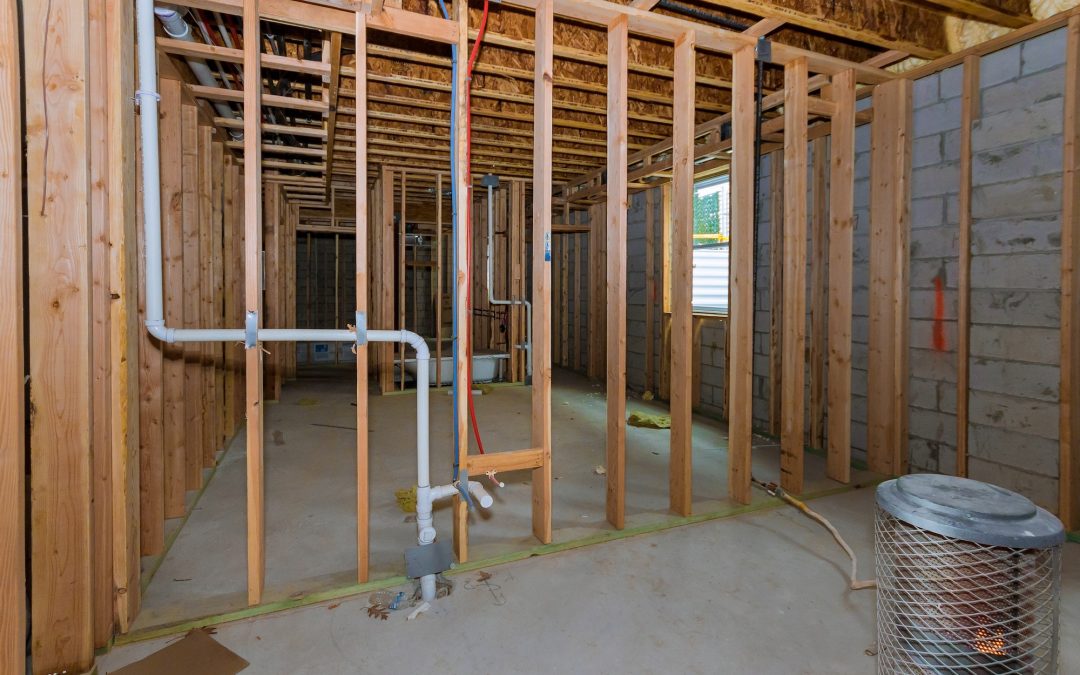
Basement Waterproofing Warranties: What to Expect and How to Make the Most of Them
Basement waterproofing warranties are an important part of protecting your investment in a waterproofing solution for your home. Warranties can provide peace of mind that the company stands behind their work, and if the system fails, you have some recourse to get it fixed. But there’s more to a basement waterproofing warranty than just a peace of mind. Knowing what’s covered and what’s not can help you make sure you get the most out of your warranty.
What Does a Basement Waterproofing Warranty Cover?
Most basement waterproofing warranties cover materials and labor costs associated with repairing any defects due to poor workmanship or faulty materials that may cause water to penetrate the basement walls or floor. Some warranties also cover the cost of repairs caused by environmental events such as flooding or earthquakes. The coverage provided by the warranty will depend on the company and the type of warranty they offer.
It’s important to read through your warranty carefully so you understand exactly what is covered and what is not covered. Some warranties only cover certain types of damage or repairs, while others may exclude things like floods or earthquakes. Be sure to ask questions if something isn’t clear.
How Long Does a Basement Waterproofing Warranty Last?
The length of time that a warranty lasts will vary based on the company and type of warranty you choose. Some warranties may last one year while others may last up to 25 years. It’s important to know how long your warranty lasts so you can plan ahead for any unexpected repairs.
Also be sure to check if there are any requirements for maintaining your warranty during its term such as regularly scheduling maintenance checks or annual inspections. This is typically noted in the terms and conditions of the warranty.
What If I Need To Make A Claim On My Basement Waterproofing Warranty?
Making a claim on your basement waterproofing warranty is relatively simple but it is important to follow all directions carefully. You should start by calling the company that installed the system or selling you the warranty and explain why you need to make a claim. They will then provide instructions on how to proceed with making a claim.
In most cases, you will need to provide evidence that there was an issue with either labor or materials that caused water damage in order for your claim to be approved. This could include photos or videos showing the water damage, receipts from materials used in installation, and any other relevant documents.
Tips For Making The Most Of Your Basement Waterproofing Warranty
- Perma Dry Waterproofing: Make sure you choose an experienced and reputable provider who offers superior products and services.
- Read Carefully: Read through your warranty carefully so you understand exactly what is covered and what isn’t.
- Check Exclusions: Be sure to check for exclusions related to environmental events such as flooding or earthquakes.
- Maintenance: Check for any requirements regarding regularly scheduled maintenance checks or annual inspections needed in order for your warranty to remain valid.
- Gather Evidence: If you need to make a claim on your warranty, make sure you have all necessary evidence before submitting your claim.
When it comes to protecting your basement from water damage, having a good quality warrant is essential. Knowing what is covered under the warranty, how long it lasts, how to make a claim, and tips for making the most of it can help ensure that you are getting the best protection possible for your investment in basement waterproofing solutions.
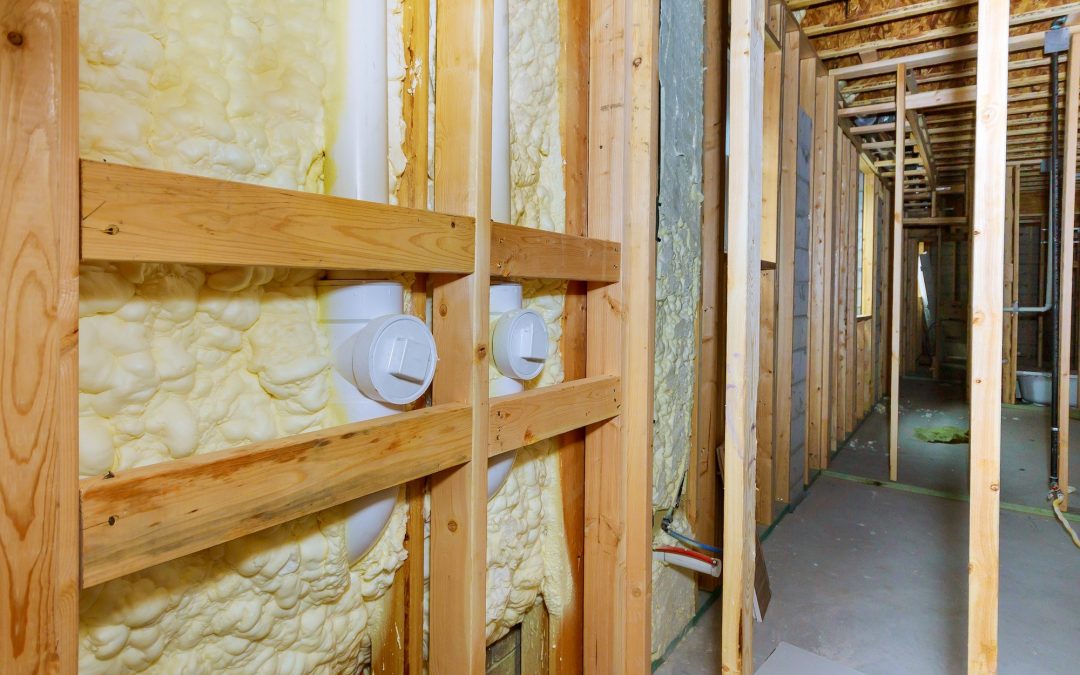
Understanding Different Basement Waterproofing Methods
Basement waterproofing is an important step for many homeowners. Because basements are often prone to water damage, it is important to take the right measures to protect your home from moisture and flooding. There are several different waterproofing methods that can be used, depending on the severity of the problem and the type of basement you have.
Interior Basement Waterproofing
Interior basement waterproofing is a process of sealing the interior walls and floor of a basement to prevent water from entering. This is usually done by applying a waterproofing compound to the walls and floor of the basement, which can be either a paint-on or spray-on solution. This type of waterproofing is best for basements that have a relatively low water table and no major cracks in the walls or floor.
A paint-on solution is the most common type of interior waterproofing and consists of a liquid rubber-like material that is applied to the walls and floor of the basement. This material will create a waterproof barrier that will prevent water from entering the basement. Additionally, it is important to check the walls and floor for any cracks or gaps and seal them with a sealant before applying the waterproofing material.
Exterior Basement Waterproofing
Exterior basement waterproofing is a process of sealing the exterior walls of a basement to prevent water from entering. This is usually done by applying a waterproofing membrane to the exterior walls of the basement, which can be either a paint-on or spray-on solution. This type of waterproofing is best for basements that have a high water table and large or multiple cracks in the walls.
A paint-on solution is the most common type of exterior waterproofing and consists of a rubber-like material that is applied to the exterior walls of the basement. This material will create a waterproof barrier that will prevent water from entering the basement. Additionally, it is important to check the walls for any cracks or gaps and seal them with a sealant before applying the waterproofing material.
Sump Pump Installation
Sump pumps are an important part of any basement waterproofing system. These pumps are installed in the basement and are designed to collect and remove any water that enters the basement, thus preventing the basement from flooding. Sump pumps should be installed by a professional to ensure that they are installed correctly and are properly maintained.
There are two types of sump pumps available, submersible and pedestal. Submersible pumps are installed in a pit in the basement and are designed to pump out any water that collects in the pit. Pedestal pumps are installed above the pit and are designed to pump out any water that directly enters the basement.
Window Well Installation
Window wells are an important part of any basement waterproofing system. These wells are installed around basement windows to collect and drain any water that enters the basement, thus preventing the basement from flooding. Window wells should be installed by a professional to ensure that they are installed correctly and are properly maintained.
Window wells are made of plastic or metal and are designed to fit snugly around the window. They should be installed with a waterproofing membrane to prevent water from entering the basement. Additionally, the well should be checked periodically for any cracks or damage and repaired if necessary.
Basement waterproofing is an important step for many homeowners to take in order to protect their homes from water damage and flooding. By understanding the different basement waterproofing methods and taking the necessary steps to protect your basement, you can ensure that your basement is safe and dry for years to come.
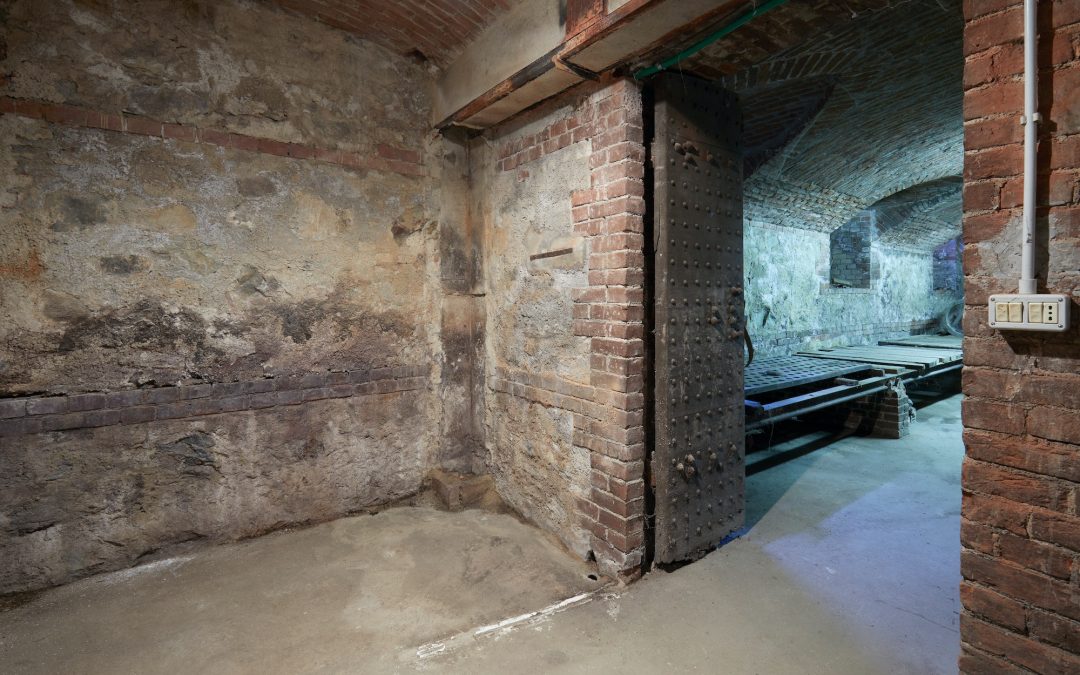
Basement Flooding Cleanup: Steps to Restore Your Space
Basement flooding is an unfortunate reality for many homeowners. Flooding can cause extensive damage to your home, and the cleanup process can be both challenging and time-consuming. Fortunately, there are steps that you can take to restore your basement space and keep your family safe and healthy. In this article, we will discuss the steps you need to take to successfully clean up and restore your basement after a flood.
Step 1 – Assess the Damage
The first step to basement flooding cleanup is to assess the damage. Immediately following the flood, it is important to determine what kind of water is in your basement – whether it is clean, gray, or black water. Clean water is considered safe and can be disposed of quickly. Gray water is slightly contaminated and can come from washing machines or dishwashers. Black water is highly contaminated and can come from sewage or other sources. Once you have determined the type of water, you will need to assess the extent of the damage to determine the best course of action.
Step 2 – Remove the Water
Once you have determined the extent of the damage, the next step is to remove the standing water from your basement. This can be done manually using buckets, or with a sump pump. If the water is contaminated, it will need to be disposed of properly. You may also need to use a wet-dry vacuum to remove any remaining water, and a mop and cleaning supplies to clean the floors and walls.
Step 3 – Dry Out Your Basement
After the water is removed, you will need to dry out your basement. This can be done by opening windows and using fans and dehumidifiers. It is important to dry out the area as quickly as possible to prevent the growth of mold and mildew. You may need to rent a commercial dehumidifier if the air is not circulating well.
Step 4 – Clean and Disinfect
Once the area is dry, you will need to thoroughly clean and disinfect all affected surfaces. This should include walls, floors, furniture, and any other items that have been damaged. It is important to use a disinfectant cleaner, since flood waters can contain bacteria and other contaminants. You may also need to replace any carpeting or flooring that was damaged.
Step 5 – Make Repairs and Prevent Future Damage
The final step is to make any necessary repairs and take steps to prevent future damage. This could include repairing cracks in the foundation, installing a sump pump, or waterproofing your basement. If your basement has suffered extensive damage, you may need to hire a professional to help you make the necessary repairs.
Basement flooding can be a major inconvenience, but it doesn’t have to be a disaster. By following these steps, you can restore your basement space and protect your family from potential health hazards. If you have any questions about the cleanup process or need help with repairs, contact Perma-Dry Waterproofing for expert advice and assistance.

Foundation Repair for Settling and Sinking Structures
Foundation repair is a necessary process for any home or building that is settling or sinking. This process helps to ensure that the structure is safe and stable, and that it can remain standing for years to come. Foundation repair can be a costly and time-consuming process, but it is worth it in the long run. In this article, we will discuss the importance of foundation repair, common causes of settling and sinking, and some of the methods used to repair foundations.
Importance of Foundation Repair
Foundation repair is an essential process for any home or building that is settling or sinking. When a structure settles or sinks, it can put the building’s occupants in danger, as the structure can become unstable and potentially collapse. Foundation repairs help to prevent such accidents by restoring the stability of the structure and ensuring that it can remain standing for years to come. Foundation repairs also help to ensure that the building is safe for its occupants, as it prevents the structure from leaning, which can cause the building to be unsafe for its occupants.
In addition, foundation repairs can also help to maintain the value of the structure. When a building settles or sinks, it can cause the value of the building to decrease significantly. By repairing the foundation, the value of the structure can be maintained, as the structure is now stable and safe.
Common Causes of Settling and Sinking
There are many factors that can cause a building to settle or sink. The most common causes of a settling or sinking structure are poor soil conditions and inadequate foundation support. Poor soil conditions can occur due to water or soil erosion, or due to poor construction methods. Inadequate foundation support can be caused by a variety of issues, such as a lack of reinforcement or a lack of proper drainage.
In addition, some structures can also settle or sink due to natural causes, such as earthquakes or floods. These events can cause the soil to be displaced or washed away, which can cause the structure to be unstable.
Methods of Foundation Repair
There are a variety of methods used to repair a foundation. The most common methods include:
- Piering: Piering is a method of foundation repair in which steel or concrete piers are installed beneath the foundation to support the structure and prevent further settling or sinking.
- Slabjacking: Slabjacking is a method of foundation repair in which a mixture of cement and other materials is injected beneath the foundation to fill voids and prevent further settling or sinking.
- Crawl Space Repair: Crawl space repair is a method of foundation repair in which the crawl space beneath the foundation is sealed and insulated to prevent further settling or sinking.
These methods of foundation repair can help to ensure that the structure remains safe and stable for years to come.
Tips for Preventing Settling and Sinking
In addition to repairing a settling or sinking foundation, there are some steps that can be taken to prevent such an issue from occurring in the first place. These steps include:
- Proper Drainage: Proper drainage is essential for the prevention of settling and sinking. Make sure that the soil around the foundation is adequately drained to prevent water from collecting beneath the foundation.
- Reinforcement: Reinforcing the foundation can help to prevent settling and sinking. Make sure that the foundation is properly reinforced with steel or concrete to prevent the structure from becoming unstable.
- Regular Maintenance: Regular maintenance of the foundation is essential for the prevention of settling and sinking. Make sure to inspect the foundation regularly and make any necessary repairs as soon as possible.
By following these tips, you can help to ensure that your structure remains safe and stable for years to come.
Conclusion
Foundation repair is an essential process for any home or building that is settling or sinking. By taking the necessary steps to repair a foundation, you can help to ensure that the structure is safe and stable for years to come. In addition, there are some steps that can be taken to prevent settling and sinking from occurring in the first place, such as proper drainage and reinforcement. If you have any questions about foundation repair or would like to learn more, please contact PermaDry Waterproofing today.
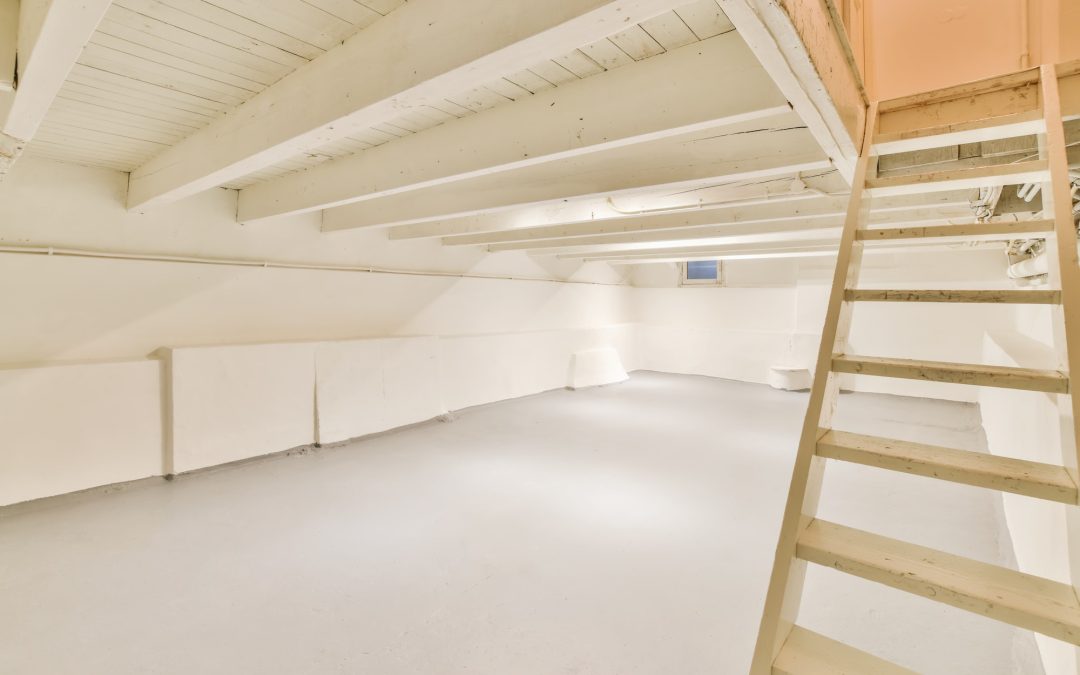
Waterproofing vs. Water Management: Understanding the Difference for Your Basement
Waterproofing and water management are two essential components of any basement renovation project. Both are necessary to ensure a healthy, dry environment in the basement, but understanding the difference between them is important to make sure you get the best possible outcome. Waterproofing seals off the basement from moisture while water management focuses on routing water away from the house.
What is Waterproofing?
Waterproofing involves using a variety of products to seal off the basement from moisture. This can include installing a waterproof membrane on the concrete walls, applying waterproof coatings or paints, or using specialized waterproofing products like sealed drains and sump pumps. Waterproofing is an essential part of any basement renovation project because it helps keep moisture out of the basement and prevents mold and mildew from growing.
The most effective way to waterproof a basement is to install a membrane on the walls. This will prevent moisture from seeping through any cracks or other openings in the foundation. It also helps keep out radon gas, which can be hazardous if breathed in over a long period of time.
What is Water Management?
Water management is the process of routing water away from your home so that it doesn’t accumulate around your foundation. This includes making sure gutters, downspouts, and drains are all working properly so that any rainwater or melted snow is directed away from your home. It may also involve installing drainage systems such as French drains or sump pumps to help channel away excess water.
Water management should be done in conjunction with waterproofing for maximum effectiveness. Properly functioning gutters and downspouts will help keep water away from the foundation, while a waterproof membrane will stop any moisture that does make it through from entering your home.
Which One Should I Do First?
When it comes to waterproofing vs. water management for your basement, it’s important to do both at the same time. If one aspect is neglected, it could lead to serious problems in the future. For example, if you only waterproof your basement but don’t manage water properly outside of your home, then you could still have issues with flooding or mold growth due to excessive moisture buildup.
It’s best to consult an expert before undertaking any kind of waterproofing or water management project. They can help you determine what needs to be done first and how best to go about completing both tasks.
What Are The Benefits Of Doing Both?
- Protection From Moisture:
Doing both will help protect your home from excessive moisture, which can cause mold growth and structural damage over time. - Safer Home Environment:
By keeping moisture out of your home, you can create a safer environment for yourself and your family by reducing potential health risks associated with mold and mildew exposure. - Increased Home Value:
Having a dry basement can help increase the value of your home since buyers are often looking for houses that have been well-maintained.
Conclusion
Waterproofing and water management are two essential components of any basement renovation project. Doing both correctly can help protect your home from excessive moisture buildup and create a healthier living environment. It is important to consult an expert before beginning any kind of project so that they can advise you on what needs to be done first and how best to go about completing both tasks. To learn more about how PermaDry Waterproofing can help with all aspects of waterproofing and water management for your basement, please visit our website at
PermaDry Waterproofing.
Get in Touch
(206) 309-5147
Contact Us
Open Hours
7:30am - 5pm Weekdays
Closed Weekends
Our Office
608 SW 12th Street
Renton, WA 98057
Email Us
